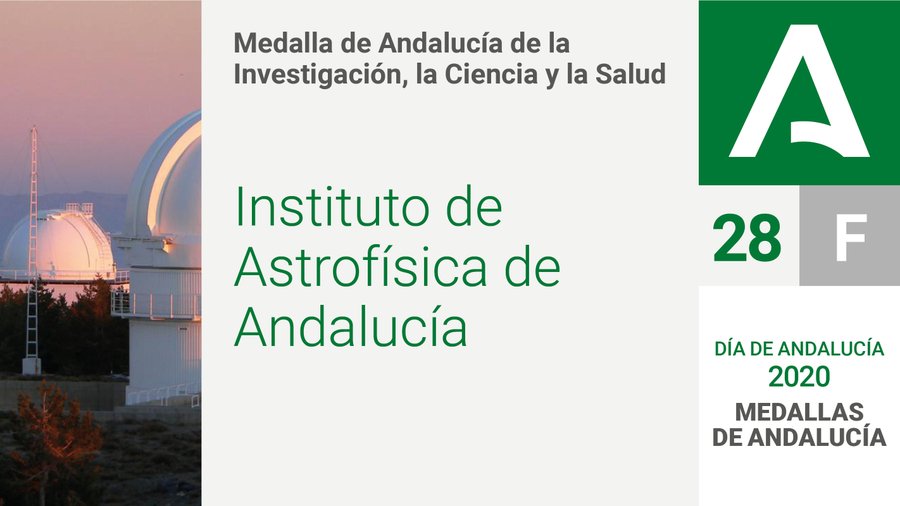The Institute of Astrophysics of Andalusia, Medal of Andalusia 2020
Awarded by the Andalusian Government, the IAA-CSIC obtains the Medal of Research, Science and Health
IAA-CSIC researchers have also obtained the Flag of Granada for their participation in obtaining the first image of a black hole
Today the winners of the Medal of Andalusia were announced, an honorary distinction awarded by the Andalusian Government in recognition of the extraordinary actions, services and merits carried out in the areas of action established by the different categories. The Institute of Astrophysics of Andalusia, a centre of the Spanish National Research Council (CSIC), has been awarded the Medal in the category of Research, Science and Health.
"The forty-five years of work of the Institute of Astrophysics of Andalusia, which have culminated in a privileged position in the international environment, both in astrophysical research and in technological development for space, and in the distinction as a Severo Ochoa Centre of Excellence, are recognised. This Medal is an honour for all of us, which gives us a new dose of enthusiasm and commitment to continue developing top-level science and technology", says Antxon Alberdi, Director of the Institute of Astrophysics of Andalusia (IAA-CSIC).
In addition, IAA-CSIC researchers José Luis Gómez and Antxon Alberdi have obtained the Flag of Granada for their participation in obtaining the first image of a black hole with the Event Horizon Telescope (EHT). The award, which recognizes exceptional work at the provincial level, has been awarded to the group of engineers and scientists participating in the EHT consortium from the IAA and the IRAM observatory in Pico Veleta (Sierra Nevada).

THE INSTITUTE OF ASTROPHYSICS OF ANDALUSIA
The IAA-CSIC is the only Severo Ochoa centre of excellence in Andalusia. Due to its scientific production, it is the first centre of the CSIC and the second in Spain in the area of Astrophysics and Space Sciences. Throughout its history it has published more than 4,500 research articles in internationally refereed journals, with more than 150,000 citations. The IAA researches the main areas of modern astrophysics, from quantum gravity to the Solar System, including the evolution of galaxies, cosmology and extrasolar planets. The centre manages the Sierra Nevada Observatory (Granada) and scientifically co-manages the Calar Alto Observatory (Almeria).
The IAA leads technological developments for space, including instruments for the Solar Orbiter (ESA), Mars Express (ESA) or BepiColombo (ESA) missions, which will study the Sun, Mars and Mercury, respectively. The centre is noted for its successful participation in the Rosetta mission, and is working on challenging future projects, such as the JUICE mission, which will explore Jupiter and its large moons, or PLATO, which will characterise planets similar to ours around other stars.
Likewise, the Institute of Astrophysics of Andalusia has developed state-of-the-art instruments for ground-based telescopes, among them Calar Alto (CARMENES and PANIC instruments) or Roque de los Muchachos (MEGARA instrument for the Gran Telescopio Canarias).
Furthermore, the IAA is involved in the development of the most ambitious international research infrastructures in global astrophysics, which will make unique contributions to the frontiers of knowledge. The IAA leads Spain's scientific and technological participation in the Square Kilometre Array (SKA), the largest radio telescope in the world. It participates in the development of the European Solar Telescope (EST), which will be the largest built in Europe, as well as in two of the instruments of the Extremely Large Telescope (ELT/ESO): the MOSAIC multi-object spectrograph and the HIRES high-resolution spectrograph.
Instituto de Astrofísica de Andalucía (IAA-CSIC)
Unidad de Divulgación y Comunicación
Silbia López de Lacalle - sll[arroba]iaa.es - 958230676
https://www.iaa.csic.es
https://divulgacion.iaa.csic.es

